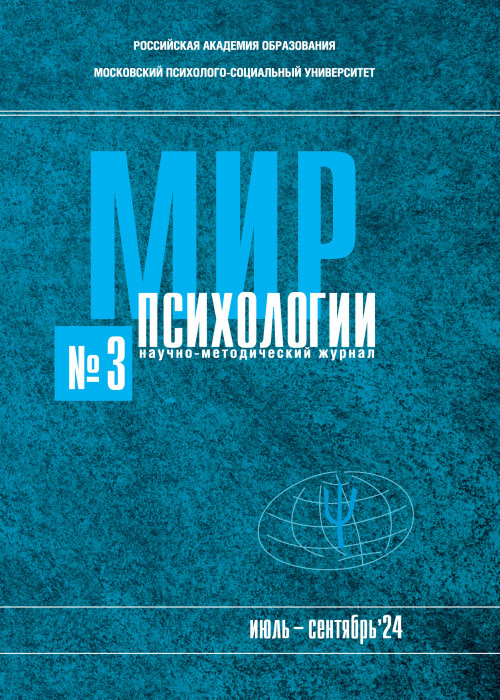Library
1. 21.The design of public participation: who participates, when and how? Insights in climate adaptation planning from the Netherlands / C. J. Uittenbroek, H. L. P. Mees, D. L. T. Hegger, P. P. J. Driessen // Journal of Environmental Planning and Management.
2. 20. Stappers, P. J. Creative connections: user, designer, context, and tools / P. J. Stappers // Personal and Ubiquitous Computing. — 2006. — Vol. 10, № 2/3. — P. 95–100.
3. 19. Oblinger, D. G. Space as change agent / D. G. Oblinger // Learning Spaces / ed. by D. Oblinger. — EDUCAUSE. Available electronically at, 2006. — URL: www.educause.edu/learningspaces (date of the application: 17.07.2024).
4. 18.Morgan, D. Focus groups as qualitative research / D. Morgan. — Newbury Park, Calif. : Sage Publications, 1988. — 85 p.
5. 17.Monahan, T. Picturing technological change : The materiality of information infrastructures / T. Monahan // Technology, Pedagogy and Education. — 2008. — Vol. 17, № 2. — P. 89–101. — <a href="https://doi.org/10.1080/14759390802098581" target="_blank">https://doi.org/10.1080/14759390802098581</a>
6. 16.Mäkelä, T. Considering Learners’ Perceptions in Designing Effective 21st Century Learning Environments for Basic Education in Finland / T. Mäkelä, M. Kankaanranta, S. Helfenstein // The International Journal of Educational Organization and Leadership.
7. 15. “It’s not you, it’s the room” : Are the high-tech, active learning classrooms worth it? / S. Cotner, J. Loper, J. D. Walker, D. Brooks // Journal of College Science Teaching. —2013. — Vol. 42, № 6. — P. 82–88.
8. 14.Huntington, S. The Clash of Civilizations and the Remaking of World Order / S. Huntington. — New York : Simon and Shuster, 1996. — 367 p.
9. 13.Hall, E. T. Beyond Culture / E. T. Hall. — Garden City, NY : Anchor Press, 1976. — 256 р.
10. 12.Gislason, N. Architectural design and the learning environment : A framework for school design research / N. Gislason // Learning Environments Research. — 2010. — Vol. 13, № 2. — P. 127–145.
11. 11.Churchman, A. Public participation in environmental design and planning / A. Churchman, E. Sadan // Encyclopedia of applied psychology / ed. by C. Spielberger. — Oxford, 2004. — P. 793–800.
12. 10.Churchman, A. Is There a Place for Children in the City? / A. Churchman // Journal of Urban Design. — 2003. — Vol. 8, № 2. — P. 99–111.
13. 9. Barber, J. Eckerd College : Peter H. Armacost Library / J. Barber // Learning Spaces / ed. by D. G. Oblinger. — EDUCAUSE. Available electronically at, 2006. — URL: www.educause.edu/learningspaces (date of the application: 17.07.2024).
14. 8. Bailey, K. Toward structured public involvement : Justice, geography and collaborative geospatial/geovisual decision support systems / K. Bailey, T. Grossardt // Annals of the Association of American Geographers. — 2010. — Vol. 100, № 1. — P. 57–86.
15. 7. Arnstein, S. A Ladder of Community Participation / S. Arnstein // Journal of the American Institute of Planners. — 1969. — Vol. 35, № 4. — P. 216–224.
16. 6. Alterator, S. Teacher adaptation to open learning spaces / S. Alterator, C. Deed // Issues in Educational Research. — 2013. — Vol. 23, № 3. — P. 315–330.
17. Podoroga, V. Metafizika landshafta. Kommunikativny`e strategii v filosofskoj kul`ture XIX–XX vekov / V. Podoroga. — Moskva : Kanon+, 2021. — 552 s.
18. 5. Подорога, В. Метафизика ландшафта. Коммуникативные стратегии в философской культуре XIX–XX веков / В. Подорога. — Москва : Канон+, 2021. — 552 с.
19. Loro, N. Razdelenny`j gorod. Zabvenie v pamyati Afin : per. s fr. / N. Loro. — Moskva : Novoe literaturnoe obozrenie, 2021. — 60 s.
20. 4. Лоро, Н. Разделенный город. Забвение в памяти Афин : пер. с фр. / Н. Лоро. — Москва : Новое литературное обозрение, 2021. — 60 с.
21. Dzhekson, M. O. Chelovecheskie seti : Kak social`noe polozhenie vliyaet na nashi vozmozhnosti, vzglyady` i povedenie / Me`tt`yu O. Dzhekson ; per. s angl. T. Azarkovich. — Moskva : AST : CORPUS, 2021. — 480 s.
22. 3. Джексон, М. О. Человеческие сети : Как социальное положение влияет на наши возможности, взгляды и поведение / Мэттью О. Джексон ; пер. с англ. Т. Азаркович. — Москва : АСТ : CORPUS, 2021. — 480 с.
23. Botton, A. de. Arxitektura schast`ya. Kak obustroit` zhiznennoe prostranstvo / Alen de Botton. — Moskva: Klassika XXI, 2013. — 240 s.
24. 2. Боттон, А. де. Архитектура счастья. Как обустроить жизненное пространство / Ален де Боттон. — Москва : Классика XXI, 2013. — 240 с.
25. Bashlyar, G. Izbrannoe : Poe`tika prostranstva : per. s fr. / Gaston Bashlyar. — Moskva : ROSSPE`N, 2004. — 376 s.
26. 1. Башляр, Г. Избранное : Поэтика пространства : пер. с фр. / Гастон Башляр. — Москва : РОССПЭН, 2004. — 376 с.
